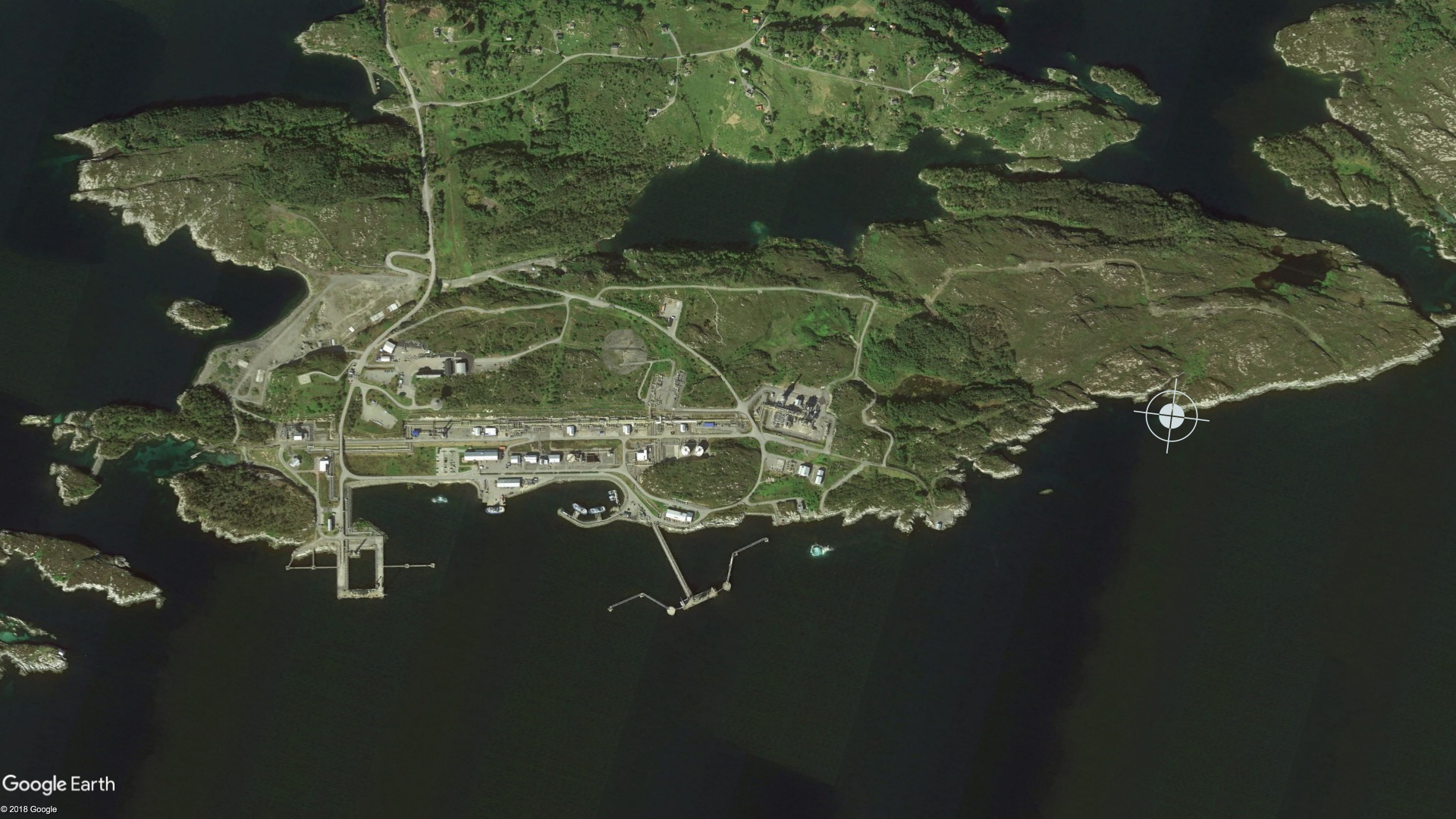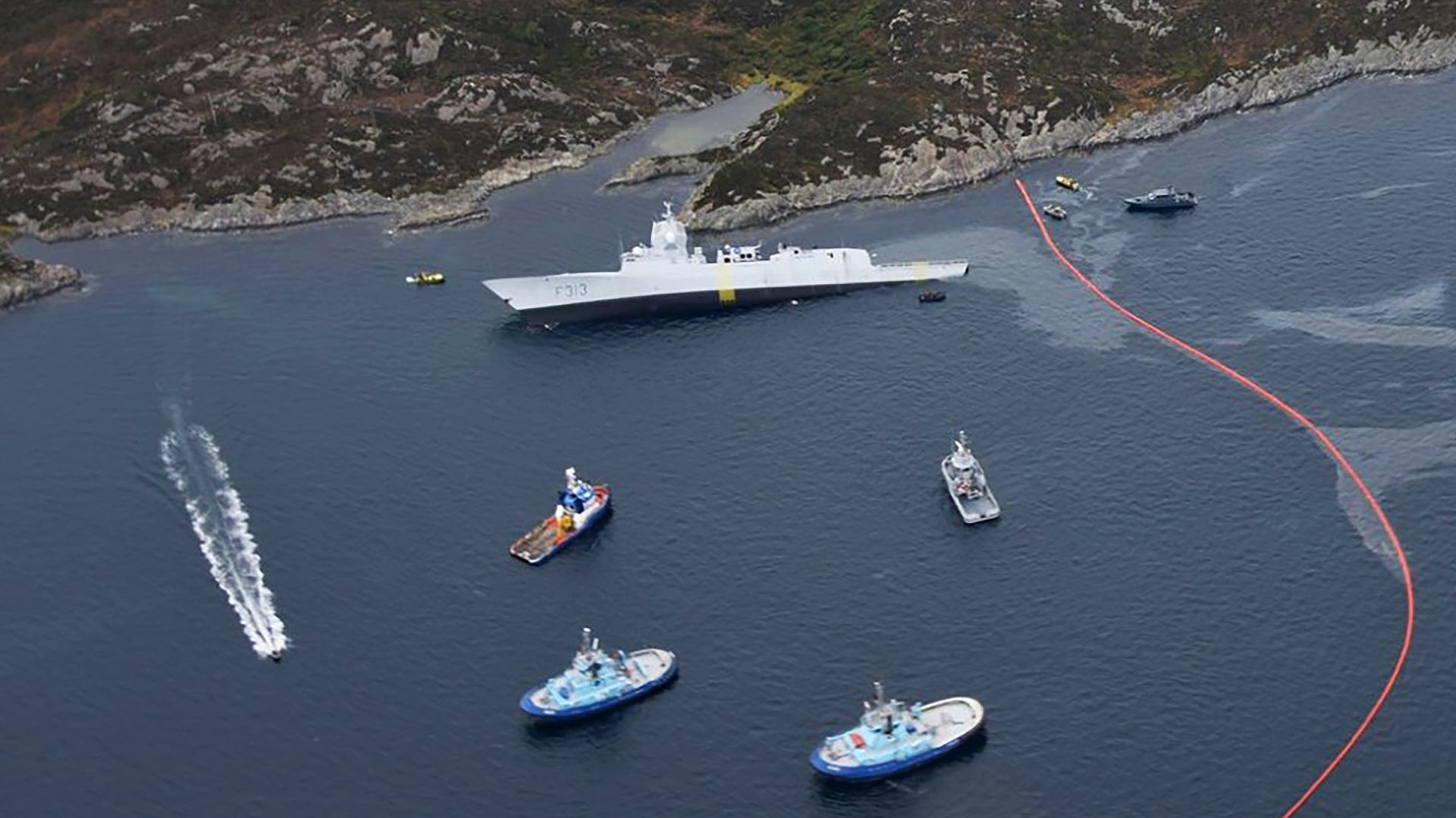Fifteen hours after the Norwegian frigate
Helge Ingstad (F313) collided with the Malta-flagged crude oil tanker Sola near Bergen, Norway, we are starting to get new details from the Royal Norwegian Navy and Norwegian Coast Guard regarding the circumstances at the time of the accident. Using images and video from the scene, we have also been able to figure out the exact resting position of the damaged warship and it’s quite intriguing.
An official NATO statement says that the ship was executing a navigational exercise alongside Standing NATO Maritime Group One (SNMG1) and that “the group was sailing in and around the Fjords, following their participation in exercise Trident Juncture 2018 which concluded on November 7th. The rest of SNMG1’s ships are positioned nearby at sea in the event that further assistance is required.”
Norway’s coast is largely made up of complex littorals that include tight passageways and varying depths. Navigating through such complex terrain is not easy, and especially at night with a group of vessels moving as a pack—if this was indeed the case.
After the collision, it became clear that the ship was quickly taking on water. The damage may have limited the ship’s ability to steer, but it still seems as if a grounding attempt was made by its crew. Once the ship was evacuated with just eight onboard receiving minor injuries, tugboats acted fast to push the vessel even closer to a rocky shoal so that it would not slip off the rocks and sink. It is now lying on its side partially submerged.

Considering how extensive the damage is to the vessel, with reported impact points below and above the waterline, it’s not clear how a salvage operation will be staged. In addition, bad weather could spell big trouble for the ship now sitting on its side on rocks. Anchoring the ship to the coastline is probably the most immediate objective aside from staving off any sort of fuel spill according to our sources familiar with maritime salvage. But this is not to say that the ship’s condition won’t degrade further if that area of the coast gets rocked by heavy surf and high winds. Conditions, when the incident occurred, were remarkably calm for an area of the world that is accustomed to regular inclement weather and high sea states. The ship’s position could also shift with the tides.
There is also the issue of what weapons the ship was carrying at the time of the incident. Its armament includes dozens of Evolved Sea Sparrow Missiles, Naval Strike Missiles, torpedoes, and 76mm cannon shells and any weapons used by the NH-90 that is usually embarked aboard. The fate of that helicopter is also unknown. 10,000 liters of jet fuel from the frigate has leaked into the water according to Johan Marius Ly of the Norwegian Coast Guard.
We still don’t know exactly where the ships collided or what the frigate was doing at the time. Was it at rest or was it underway? Just because it was on a navigation drill with other ships, that doesn’t mean that it was steaming at the instant of the collision. We also don’t know if the tanker, which just took on 625,000 barrels of crude oil before the crash, was in the right spot, but it could have had trouble spotting the frigate which has a reduced radar signature and didn’t have its transponder on, at least according to vessel tracking aficionados (caution: this fact may change). These factors, as well as darkness, can be exasperated by the littorals around the Norwegian Coast, a complex maritime environment that can challenge radar and lookouts alike.
There are also reports that the collision actually happened in or very near the oil terminal and harbor at Sture. The quick arrival of tugboats and emergency vessels may lend some evidence to this being accurate. It’s even possible a tugboat helped the ship run aground initially. After reviewing all the available imagery and videos, we were able to geolocate the ship’s current place of rest. As you can see, it is very near the Sture oil terminal. This would also better explain why the terminal has shut down operations, but we can’t say for certain if the crash happened while either of the ships was just getting underway or approaching the harbor, but it seems likely.

As for the eight crewmen aboard the Helge Ingstad that were reported injured, two went to the hospital, but none have life-threatening injuries, which is pretty amazing considering the damage we see on the vessel.
We will continue to update this story as new information comes available.
Update: 12:56pm PST—
Watch this remarkable time-lapse video of the tugs working to keep the ship on the rocky shoal as it sinks.
Update: 1:36pm PST—
Some photos F313 during Trident Juncture:
Contact the author: Tyler@thedrive.com
